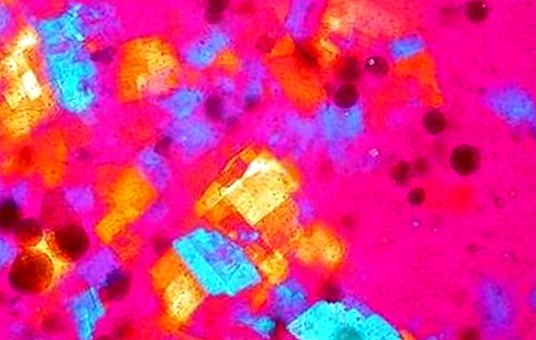Inflammation of the lymph nodes: why enlarge
The immune system of our organism is a complex system made up of different structures, viscera and organs that work in accordance with an aim: to protect our body against the external aggressions of infectious agents (both viruses and bacteria), and in some cases also they participate directly in different important functions such as, for example, acting as a filter of blood circulation or participating in transport and in the absorption of nutrients. It is the case of spleen, formed by cells -especially by lymphocytes- and by blood found in the abdomen to the right of the stomach.
The ganglia (known in turn medically as lymph nodes) are also part of our immune system. They consist of small, oval and encapsulated structures that we find interspersed in the path of the lymphatic vessels, sometimes quite dispersed throughout our body and in some areas they are grouped in greater numbers (this is what happens with areas such as the neck, underarms and groin). Inside we find fibrous trabeculae through which the lymph flows.

Between the functions of the ganglia more important, act as a barrier against infections being able to act as an effective filter capable of destroying toxins and microorganisms.
Where do we find lymph nodes in our body and which are palpable?
The truth is we find lymph nodes throughout our body, some of them accessible to medical palpation and others not, being only visible when certain medical tests are performed (as is the case with ganglia located near internal organs). Even in areas where they are palpable, it is possible that their palpation may be complicated due to their small size under normal conditions.
Those that are easily accessible are those located in the neck, in the neck, in the armpits and in the groin. But precisely depending on the place they will present a different normal size, and a different shape. For example, the nodes located at the nape are lentil and their size is usually 0.5 centimeters, while those found in the groin are much longer and measure around 1.5 centimeters under normal conditions.
Inflammation of a lymph node: its main causes
Although we always tend to think of a single cause, such as viral or bacterial infection, the truth is that in fact the lymph nodes can become inflamed by many causes. In the majority of the occasions it is due mainly to banal causes and without much importance that they disappear after a few days. However, at other times its cause is much more serious, and may be due to the existence of cancer. Therefore, in view of the inflammation of a lymph node, observation is necessary, so that when the lymph node remains enlarged for more than 2 weeks without an apparent cause, the assessment of the urgent physician is necessary.
We can summarize the main causes why a lymph node is inflamed in the following section:
- Common infections: as is the case of flu, tonsillitis and colds.
- Viral infections: infectious mononucleosis, cytomegalovirus, measles, HIV and rubella.
- Bacterial infections: salmonellosis, tuberculosis and syphilis.
- Other infections: toxoplasmosis, leishmaniasis or malaria.
- Rheumatic diseasesSystemic lupus erythematosus or rheumatoid arthritis.
- Autoimmune diseases: lupus, sarcoidosis or Kawasaki syndrome.
- Malignant lymphomas: Leukemia, Hodgkin's disease or non-Hodgkin's lymphoma.
The lymph nodes can also be inflamed by the consumption of certain medications, such as captopril, atenolol, allopurinol, hydantoin, perchlorate or cotrimoxazole.

The characteristics of the ganglia that must be taken into account
There are some characteristics of the ganglia which are very useful when it comes to discovering whether or not we are facing a normal, inflamed or pathological lymph node. These main characteristics are the following:
- Size: nodes with less than 1 centimeter in diameter are considered normal. We must bear in mind that those located in the groin can reach up to 1.5 centimeters. When the size is more than 4 centimeters a biopsy should be performed, just as it occurs in the presence of nodes above the clavicle (they are always pathological).
- Mobility: inflamed lymph nodes of infectious origin and infiltrates by lymphomas tend to be easily mobile, while metastatic infiltrates tend to be fixed and adhere to deep planes.
- ConsistencyWhen the cause of the inflammation is infectious, the lymph nodes tend to have a soft consistency, the lymph nodes with firm consistency are common in the lymphoma, and those of hard consistency are common in cancer metastases.
- Location: depending on the place where the lymph node has swollen, it can help to know what is the cause taking into account which anatomical area drains the ganglionic chain.
- Pain: It is usual the appearance of pain in the lymph nodes when inflammation occurs as a result of an infectious process, not being so common in case of necrosis due to metastasis.
Before any inflammation of a ganglion it is necessary to observe its evolution throughout the days, so that before a size greater than 4 centimeters or in the presence of an inflamed ganglion that enlarges without any apparent cause or that does not reduce its size after 2 weeks it is very important to go to the doctor. This article is published for informational purposes only. It can not and should not replace the consultation with a Physician. We advise you to consult your Trusted Doctor.



